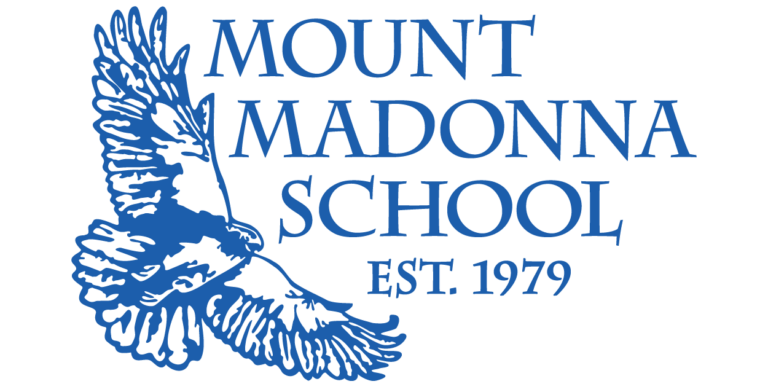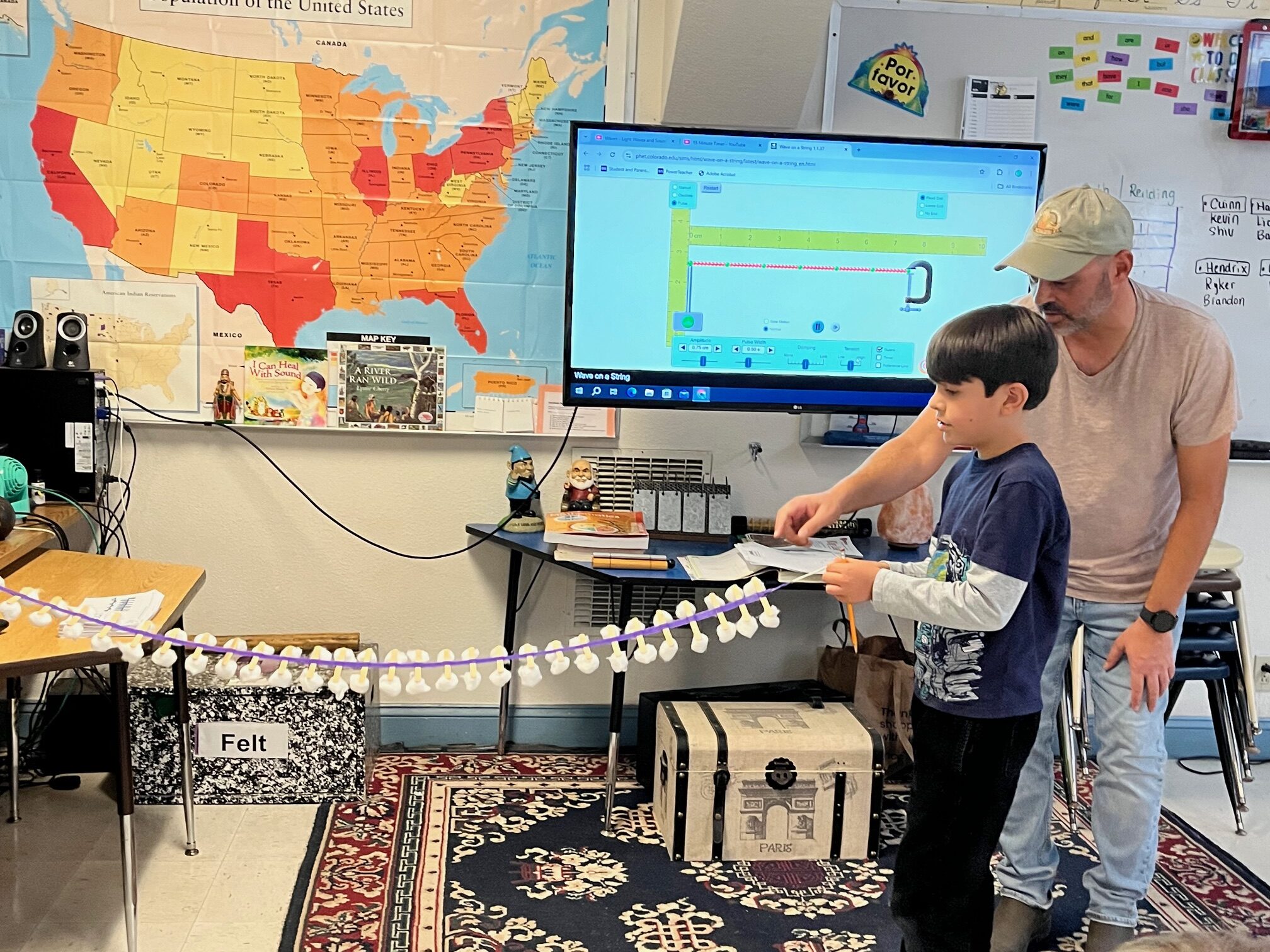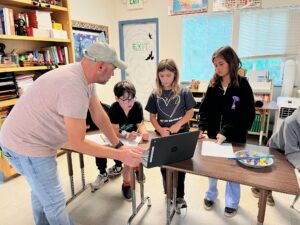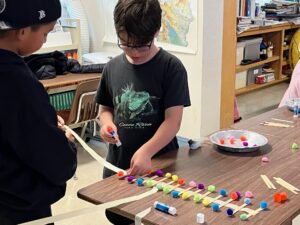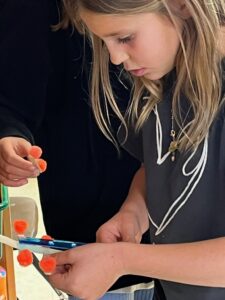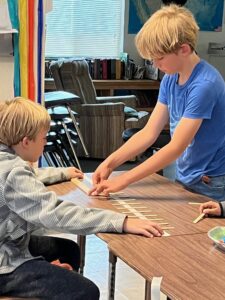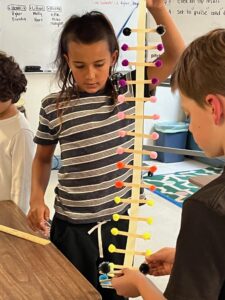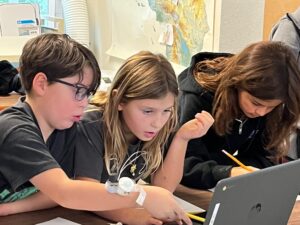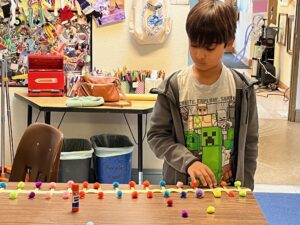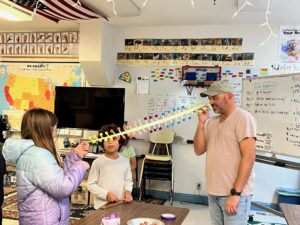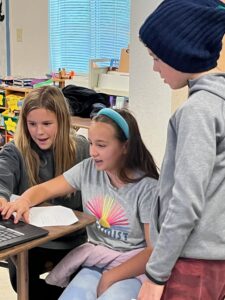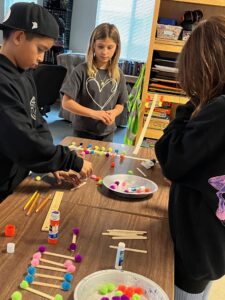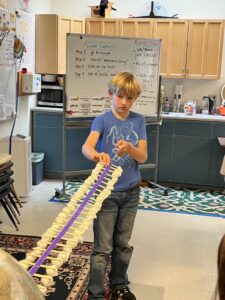 Waves – energy transfers that travel and spread outward from the site of origin – were a recent focus for Mount Madonna School (MMS) third and fourth grades students, who have been learning about wave physics, including the behaviors, properties and types of waves.
Waves – energy transfers that travel and spread outward from the site of origin – were a recent focus for Mount Madonna School (MMS) third and fourth grades students, who have been learning about wave physics, including the behaviors, properties and types of waves.
As a conclusion to their study of the science of waves, the students work in small, mixed-grade groups to study and test the effects of dampening, tension and amplitude on wave creation using a computer simulation called “Wave on a String,” a science, technology, engineering and mathematics (STEM) resource made available through the University of Colorado, Boulder.
“This is so cool,” said fourth grader Harper Sebok, as she adjusted the simulation settings and watched the effect on the results.
“Then you reduce the tension, there is more space between the waves and they are slower” noted fourth grade student Hendrix Kasznar.
“Yes,” said teacher Nick Cabassa. “And what happens when there is more tension?”
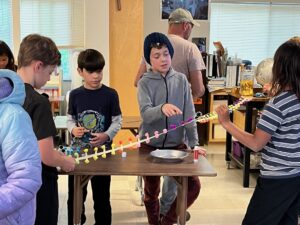 “The more tension there is, the faster the wave goes,” answered third grader Lio Mallery.
“The more tension there is, the faster the wave goes,” answered third grader Lio Mallery.
Next Cabassa showed the students a simple wave machine he’d constructed with classroom supplies and demonstrated how to use demonstrate wave action. Several students stepped forward and took turns testing the wave simulator using different amounts of tension and amplitude.
Then, using small colorful “pom-poms,” wooden craft sticks, masking tape, rulers and glue sticks, students worked in small groups to construct their own wave simulator models, carefully affixing the various pieces to the yard-long pieces of tape in two-inch intervals.
“It’s great to see the students using their hands and building something that helps them to see science in action,” said Cabassa. “The looks on their faces when they saw it work, were priceless. My next step will be to combine each group’s wave simulator to create a single large one for the classroom that they can engage with all year.”
